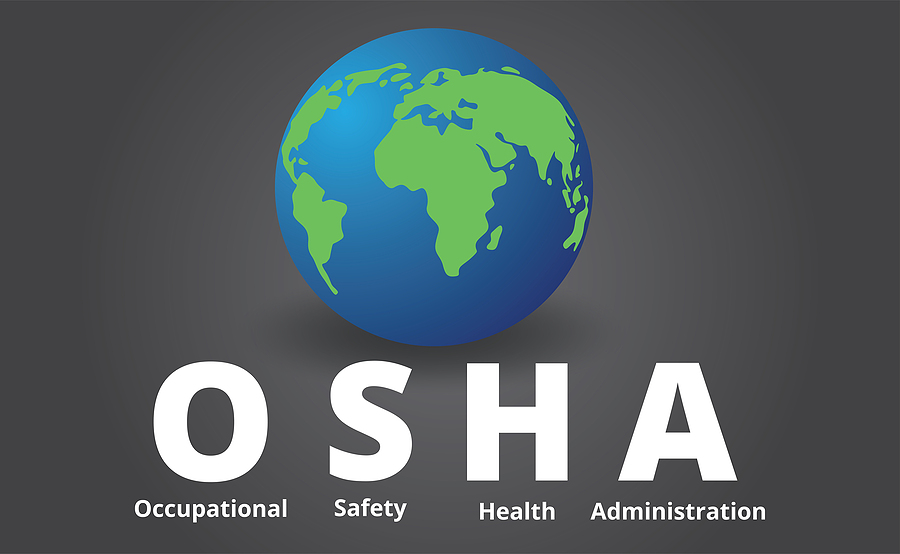OSHA 10-Hour vs. OSHA 30-Hour – What are the Differences?

If someone tells you that you need a “DOL card,” they are most likely referring to the card you receive from the Department of Labor once you have completed the OSHA Outreach course that you will need.
For those who have gone through the process, unfortunately, knowing you need to take OSHA Outreach is only the start. Then there are a lot of other questions.
- Which “industry” do you need?
- Construction vs. General Industry vs. Maritime?
- OSHA 10 vs OSHA 30: What Course Level Do You Require?
That can become confusing quickly.
Today, we will be discussing the difference between OSHA 10 and OSHA 30.
OSHA 10 vs OSHA 30: What is the difference?
There are a few key differences between OSHA 10 and OSHA 30.
- The number in OSHA 10 and OSHA 30 represents the length of the curriculum.
- 10 hour OSHA courses provide 10 hours of instructional time, quizzes, tests, and breaks.
- OSHA 30 is 3 times longer.
Target Audience of OSHA 10 vs. OSHA 30
OSHA 30, on the other hand, is longer because it is intended for workers with supervisory responsibilities. Among them are, but aren’t limited to, supervisors, managers, engineers, site leads, project managers and safety specialists.
OSHA 10 for Workers Who Are Only Responsible for Themselves
OSHA 10 vs. OSHA 30 Curriculum
Introductory to OSHA for All OSHA Outreach Training Courses at Any Industry and Level That teaches everyone what OSHA is, why it matters, and what workers’ rights and employers’ responsibilities OSHA enforces.
OSHA Outreach curriculum will differ by industry and level other than this one topic. Each industry has a set of obligatory sectors focusing on that workplace’s most obtrusive and troublesome dangers and a set of elective subjects that cover extra role-specific dangers.
We do spend most of our time on mandatory topics in OSHA 10 (6 or 7 of the 10 contact hours). The rest of the time needs to address a number of elective topics, giving instructors a little room to customize the curriculum based on the audience.
OSHA 30 starts with Intro to OSHA and the most common hazards, but then widens and deepens. The majority of extra hours fall into the “broader” category – because a supervisor has to know all the regulations that apply to their entire crew, OSHA 30 covers many more elective subjects.
However, OSHA 30 goes deeper into the “how” of OSHA. Because it’s geared toward supervisors, all OSHA 30 courses have a required topic of Managing Safety and Health, which is about the different roles OSHA requires that management take – such as job site inspections, injury/illness prevention programs, accident prevention programs, hazard ID/control, how to facilitate safety meetings, supervisory communication, etc.
FAQs
How Do You Know If You Need OSHA 10 vs. OSHA 30?
The difference between OSHA 10 and OSHA 30 is pretty well defined for most people. Is your job to oversee or be responsible for anyone else? What you want is the 30-hour edition of your industry Outreach program. Otherwise, there is the 10-hour version.
There are exceptions, though.
Certain states, counties, or municipalities have laws that mandate OSHA Outreach (or another safety training program) for some kinds of workers. If you are affected by one of these laws, then the specific course requirements are likely spelled out for you.
You might also find relevant policies from your employer that would outline what’s required or preferred for your job.
Before you choose a class it’s worth checking to see if there are any requirements imposed by the government – and employers.
When Would You Need Both OSHA 10 and OSHA 30?
During your career, you might find yourself taking both – OSHA 10 as a non-supervisor, and OSHA 30 in case you’re in a supervisory role.
But there are a few situations where people believe that they may need to take both the classes, and they certainly don’t.
Does OSHA 30 Require OSHA 10 First?
Not quite – OSHA 10 does not serve as a prerequisite for OSHA 30. The 30-hour course is a stand-alone course — you can take it without having had the 10-hour course.
So you may have a position that you need to, you know, get the supervisor-level OSHA Outreach course and you simply never earned the 10- hour certificate and that is okay. You can just begin with the course that your employer demands.
Is OSHA 10 Required If I’m Already OSHA 30?
While some states mandate that all personnel attain an OSHA 10 card, other states require even non-supervisory personnel to obtain an OSHA 30 card. Do you need to retake in case you moved to a state that requires OSHA 10 when you have already taken OSHA 30?
Probably not. In fact, most states include with their regulations that OSHA 30 is an acceptable substitute for OSHA 10 explicitly. Some states do have required renewal frequency and the DOL card “expires” through those states. You might also have to take a new certification course if your previous one is too old.
Does OSHA 30 Cover OSHA 10?
What’s covered in OSHA 30 courses overlaps with everything taught in that industry’s OSHA 10 course, which is why OSHA 10 isn’t a prerequisite for OSHA 30 and why you don’t have to take the 10-hour curriculum if you already have the 30-hour certificate.
Where Do You Get OSHA 10 and OSHA 30 Cards?
OSHA does not provide Outreach classes directly. Instead, they “train the trainers,” putting third-party training providers through rigorous industry-specific course work. These training providers are then deemed “OSHA-authorized” to provide official OSHA 10 and OSHA 30 cards.
When you complete the curriculum, we will issue you a certificate of completion and mail you a sturdy plastic DOL card.
Enroll in OSHA 10-hour or OSHA 30-hour today to get started!
